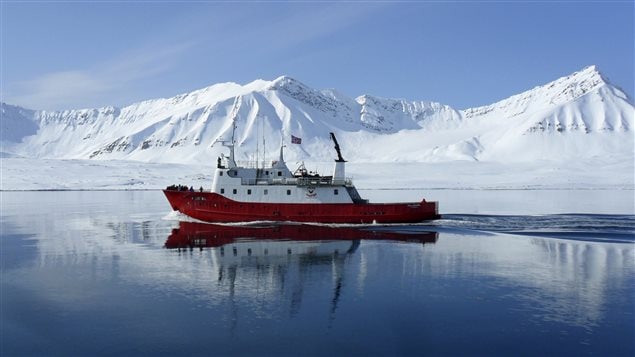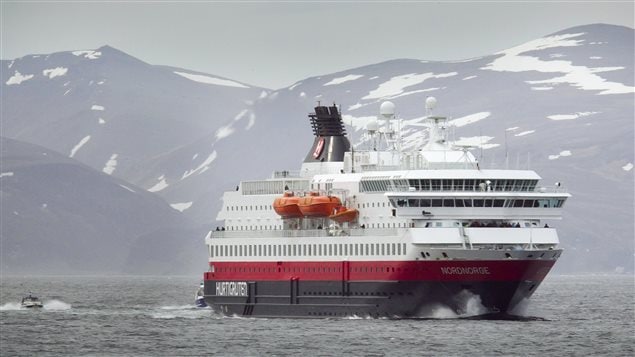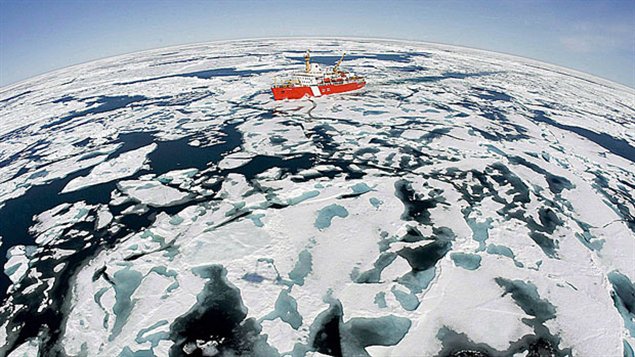The international campaign to end the use of heavy fuel oil (HFO) by ships plying the waters of the increasingly accessible Arctic is gathering steam ahead of an important meeting of the world maritime body next year.
At the recent Our Ocean conference in Malta, a coalition of environmental NGOs, Indigenous groups and the cruise line industry launched an ambitious initiative to build support for the eventual phase-out of HFOs in Arctic shipping.
The Our Ocean Arctic Commitment brings together the Clean Arctic Alliance, a partnership of international NGOs, the Eyak Preservation Council, an Alaskan social change organisation, expedition cruise operator Hurtigruten and the European Climate Foundation, a philanthropic foundation, said Sian Prior, Lead Adviser to the Clean Arctic Alliance.
The initiative complements the launch of the “Arctic Commitment” in Tromso, in northern Norway, in January 2017, which has already been signed by more than 50 leading Arctic companies, polar explorers, Indigenous groups, NGOs and political figures, she said.
It also seeks to build upon a Canadian proposal adopted by the International Maritime Organization (IMO) in July to begin the process of developing rules on mitigating the risks of use of heavy fuel oil (HFO) to power ships operating in Arctic waters, Prior said in a phone interview from the United Kingdom.
‘Two-fold threat’
“What we want to do is to raise awareness of the threat posed by using heavy fuel oil in the Arctic,” Prior said. “The threats are two-fold: there is the risk of an oil spill and there is also burning the fuel produces black carbon, which speeds up warming of the Arctic environment.”
According to a report by the International Council on Clean Transportation (ICCT), heavy fuel oil – a thick viscous residual fuel that produces high amounts of soot, particulate matter and black carbon – was the most consumed marine fuel in the Arctic in 2015.
Although only 42 per cent of ships in the Arctic waters covered by the IMO’s Polar Code operated on HFO in 2015, these ships accounted for 76 per cent of fuel carried and 56 per cent of fuel transported in this region, the ICCT report said.
A report commissioned by the Arctic Council’s Protection of the Arctic Marine Environment (PAME) Working Group found that “in light of the particular heavy fuel oil properties, significant risk reduction will be achieved if the onboard oil type is of distillate type rather than heavy fuel oil,” according to the IMO.
“In addition to its toxicity, HFO is extremely viscous and breaks down more slowly in the marine environment than other fuels, particularly in colder regions like the Arctic,” the IMO document said. “Studies show that while 90 per cent of HFO remains after 20 days in the ocean, marine diesel can take as few as three days to break down.”
HFO’s persistence makes it more likely that any spill will eventually reach and pollute the shoreline, the report said.
Carol Hoover, executive director of the Eyak Preservation Council, said her Alaskan community was the ground zero for the devastating impacts of the 1989 Exxon-Valdez oil spill, whose harmful effects linger to this day.
“A dangerous heavy fuel oil (HFO) spill would be catastrophic and forever life changing for the people who depend on their pristine habitat,” Hoover said in a statement. “We need to do everything we can to prevent this from happening in the Arctic marine environment.”
Alternatives already exist

The initiative also seeks to profile the alternative fuels that are already available to the shipping industry and the companies that are leading the way in using alternative fuels and technologies, such as diesel or liquefied natural gas (LNG) to reduce the threats to the Arctic environment, Prior said.
Daniel Skjeldam, CEO of expedition cruise operators Hurtigruten, which does not use heavy fuel oil in any of its ships, and co-sponsors the Arctic Commitment, said the shipping industry must be frontrunners in promoting regulations that will secure sustainable Arctic growth.
“If heavy fuel oil is spilled in cold Arctic waters, it will have larger consequences than anywhere else,” Skjeldam said in a statement. “The Arctic deserves sustainable growth and innovation, and the industry needs to move first.”
Canadian proposal
The Canadian proposal at the IMO in July, Measures to Reduce Risks of Use and Carriage of Heavy Fuel Oil as Fuel by Ships in Arctic Waters, was co-sponsored by Finland, Germany, Iceland, the Netherlands, Norway and the United States.
- Canadian proposal on heavy fuel oil in Arctic adopted by world maritime body
- World maritime body to discuss Canadian proposal on heavy fuel oil in the Arctic
It will be further debated at the IMO’s upcoming Marine Environmental Protection Committee (MEPC) meeting in April 2018.
“We would argue that the best mitigation measure is a ban,” Prior said.
“We know we don’t have support across the board yet – Russia in particular has not been keen to show support for a ban as yet – however, having said that, we’re all seeing increasing messages coming from our Russian colleagues that there are alternatives available and it is time to move away from heavy fuel oil and focus on using alternatives instead.”
‘This isn’t a tricky thing to do’

A similar picture exists across the shipping industry where a number of sectors within the industry, including the Association of Arctic Expedition Cruise Operators support the ban, Prior said.
Other players in the industry are ready to stop using the HFOs in the Arctic, but want to have the right to carry them on board for use once they leave Arctic waters, she said.
The initiative also enjoys wide-ranging support among Arctic Indigenous communities that are very concerned about a potential HFO spill because of the threat to their livelihoods and their food supply, Prior said.
The objective of the new initiative is to expand the “Arctic Commitment” to over one hundred leading Arctic voices, Prior said.
“What we’re trying to do is to convince not just Canada but other Arctic countries and other countries that are interested in the Arctic and are using the Northern Sea Route and the Northwest Passage that we need to take action to protect the Arctic, that we have alternatives to heavy fuel oil already available, already on the market, and we want to see shipping moving to these alternatives and persuading the decision-makers this isn’t a tricky thing to do,” Prior said.
“It just needs a bit of political will to push us past the endpoint.”







For reasons beyond our control, and for an undetermined period of time, our comment section is now closed. However, our social networks remain open to your contributions.